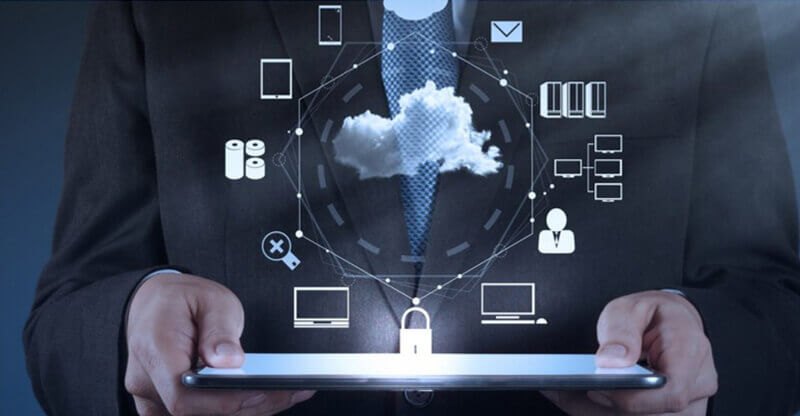How Digital Menus are Changing the Restaurant Industry

Recent years have seen considerable changes in the restaurant business due to the rapid development of technology and data science consulting service. The introduction of digital menus is one of the most critical shifts. Restaurant operations have been transformed by digital menus, which also improve the eating experience for patrons. In this article, we’ll discuss how digital menus affect the eatery business and alter eateries’ operations.
Introduction
Restaurants no longer use printed placemats as a standard practice. Thanks to the development of digital technology, restaurants are now using digital menus to give their clients a more engaging and customized experience. With the help of potent tools like digital menus, eateries can display their goods and services in creative ways.
What are Digital Menus?
Customers can peruse and choose culinary products from digital menus using a digital device, such as a tablet or a smartphone. These interactive meals may include top-notch pictures, in-depth explanations, and dietary data. Additionally, digital menus can be altered to fit the identity and aesthetic of a restaurant.
Benefits of Digital Menus for Restaurants
For eateries, digital menus have several advantages, such as increased productivity, higher sales, better client satisfaction, customization, and freedom.
Improved Efficiency
With digital menus, food ordering takes less time because customers can place their orders without staff help and quickly browse the selection. As a result, the employees will have more time to devote to customer care and other elements of the dining experience, like meal preparation.
Increased Sales
Customers can be upsold using digital menus to advertise discounts, add-ons, and exclusive offers. Additionally, they can make suggestions based on previous purchases, increasing the chance of a repeat company.
Enhanced Customer Experience
Thanks to digital menus, customers can enjoy a more dynamic and exciting eating experience. They have access to menu products’ high-quality pictures, thorough descriptions, and nutritional data, all of which can assist them in making educated decisions about the foods they eat.
Customization and Flexibility
Changes in food options, prices, and promotions can readily be reflected in digital menus. Additionally, they can be altered to fit the branding and aesthetic of an eatery, giving patrons a consistent visual experience.
Impact of Digital Menus on Restaurant Operations
Restaurant operations have been significantly impacted by digital displays, which have streamlined procedures and cut down on wait times.
Reduced Wait Times
Customers can buy meals from digital menus at leisure, speeding up the ordering process. They can also be used to control the busiest times for eating, enabling establishments to serve more people without compromising the standard of service.
Improved Order Accuracy
With no need for writing orders, digital menus increase order precision while lowering the possibility of mistakes. Additionally, reducing returns and customer grievances raises customer happiness.
Cost Savings
Printing expenses for conventional paper meals can be decreased with digital menus. They can also be used to keep track of merchandise, which cuts down on waste and aids eateries in making wise purchases.
Streamlined Inventory Management
By monitoring sales in real-time, digital menus can assist eateries in streamlining the administration of their goods. As a result, they can handle their supplies more effectively, cutting down on waste and the possibility that they will run out of ingredients during busy times.
Challenges of Implementing Digital Menus
While digital menus have many advantages, adopting them can be difficult for restaurants.
Initial Costs
Digital menu implementation can be expensive initially, especially for small companies like eateries. This covers the price of developing software, creating devices like tablets or kiosks, and providing continuous upkeep and support.
Technical Difficulties
Technical issues like program flaws or hardware failures can affect digital menus. This may cause service delays and annoyance for both employees and clients.
Training Staff
Staff training may be necessary to guarantee their ease and competence with the new technology as part of implementing digital menus in an eatery. Restaurants may find this time-consuming and expensive, especially those with a high staff change rate.
Future of Digital Menus in the Restaurant Industry
Digital menus are anticipated to become even more common in the eatery sector as technology develops. Customers will likely experience even more convenience and freedom as more people use mobile devices to purchase and pay. For a more immersive and customized eating experience, digital menus may also include elements like augmented reality or artificial intelligence.
Conclusion
Digital menus have revolutionized the eating scene by giving patrons a quicker, more customized, and more exciting meal experience. Electronic displays are more advantageous than traditional ones, despite some implementation difficulties. Digital menus will become even more common and advanced in the eatery business as technology develops.
One of the technology and data science consulting service providers that also serves the hospitality sector is Aquarious Technology. It creates and provides complete hotel and dining options.
Restaurant activities can be made more efficient and automated with Aquarious Technology’s data science consulting service. A first-of-its-kind contactless digital menu platform enables eatery companies to reach a more extensive client base and boost sales. We will also help you build an impeccable online reputation management model.
The digital menu offers a significantly superior experience compared to a conventional paper menu. Restaurant owners can add explanations of delta items, high-resolution photos, extra details like nutrition, and more with the help of an intuitive UI.
Restaurants can boost sales by engaging customers more and providing comprehensive product information visually appealingly.
FAQs
Are digital menus more expensive than traditional paper menus?
-While initial costs are associated with implementing digital menus, they can ultimately save money in the long run by reducing printing costs and streamlining inventory management.
Can customers still interact with staff when using digital menus?
-Yes, digital menus do not replace the need for staff interaction. Instead, they free up staff time to focus on other aspects of the dining experience.
Do digital menus provide nutritional information?
-Yes, digital menus can provide detailed nutritional information for menu items, helping customers make informed food choices.
What happens if there is a technical issue with the digital menu?
-Restaurants should have a plan to quickly resolve any technical issues that may arise with digital menus to minimize the impact on the customer experience.
Will digital menus replace traditional menus entirely?
-While digital menus are becoming more prevalent in the restaurant industry, it is unlikely that they will completely replace traditional paper menus, at least shortly. Many customers still prefer the tactile experience of a physical menu.
-
14
+Category
-
98
+Post
Top Categories
Popular Posts
- The Power of Prototyping in Software Development
- Version Control Best Practices for App Development
- Understanding Visual Hierarchy: A Guide to Effective Design
- Crafting Intuitive Navigation: A Guide to Seamless User Experience
- Choose Your Best Cloud Provider
- Making the Leap: Transitioning from Manual to Automated Software Testing
- Using GitHub- Advantages and Disadvantages
- E-commerce Product Photography on a Budget
- Tech Innovation in Developing Countries
- Smart Cities: How Technology is Shaping the Urban Landscape
- Principles of Composition: Creating Visual Harmony with Composition
- Exploring Cross-Platform App Development
- Why Regular Website Updates Matter
- Navigating Effective Facebook Audience Targeting
- Implementing Ads for Game Monetization
- Designing User-Centric Mental Health Apps: Enhancing Well-being in the Digital Age
- NFTs and Collectibles: Creating NFT App Solutions for Collectors and Enthusiasts
- Successful Implementation of Enterprise Apps
- Maximizing Business Impact with EQ
- Proven SMO Ads Optimization Tips (2023)






